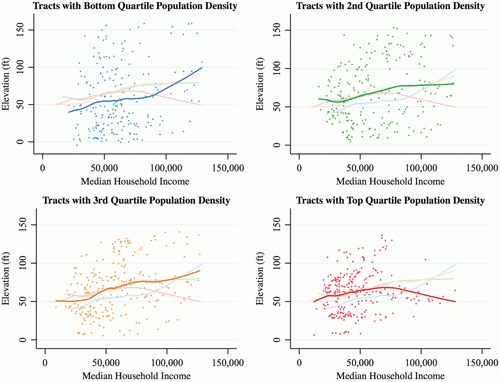Where is your nearest garbage dump? Where does the local factory go when it needs to get rid of some particularly toxic chemicals? If there was a disaster, would you have to move? Could you?
Sociologists use shorthand terms like “environmental racism” to draw attention to the fact that poor communities and communities of color are often more likely to be exposed to hazardous materials, and cases like the Flint water crisis drive this point home.
Of course, housing inequality also means that nobody has to dump anything to put poor communities in hazardous positions. One recent example of this is the flooding in Houston after Hurricane Harvey. Over at Socius, Yuqi Lu gathered data on the median household income in neighborhoods across the Houston area from the American Community Survey and matched it with land elevation data from Google Maps.

In general, poorer neighborhoods in Houston sit at lower elevations, and thus are more susceptible to flood risks. This relationship is strongest in less-densely-populated areas, such as rural and suburban neighborhoods, but additional analysis in Lu’s article shows the relationship is robust.
The latest reports are in on human caused climate change. Regardless of whether we can act to turn it around in time, we’ll also have to recognize the fact that not everyone faces the same fallout from environmental hazards and natural disasters.
Evan Stewart is an assistant professor of sociology at University of Massachusetts Boston. You can follow his work at his website, on Twitter, or on BlueSky.
Comments